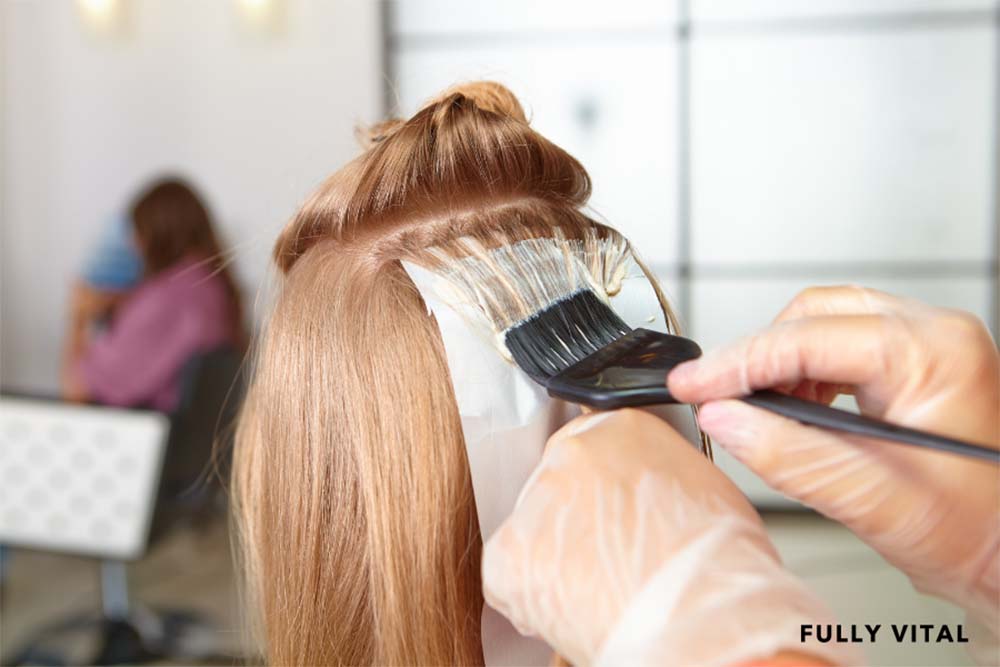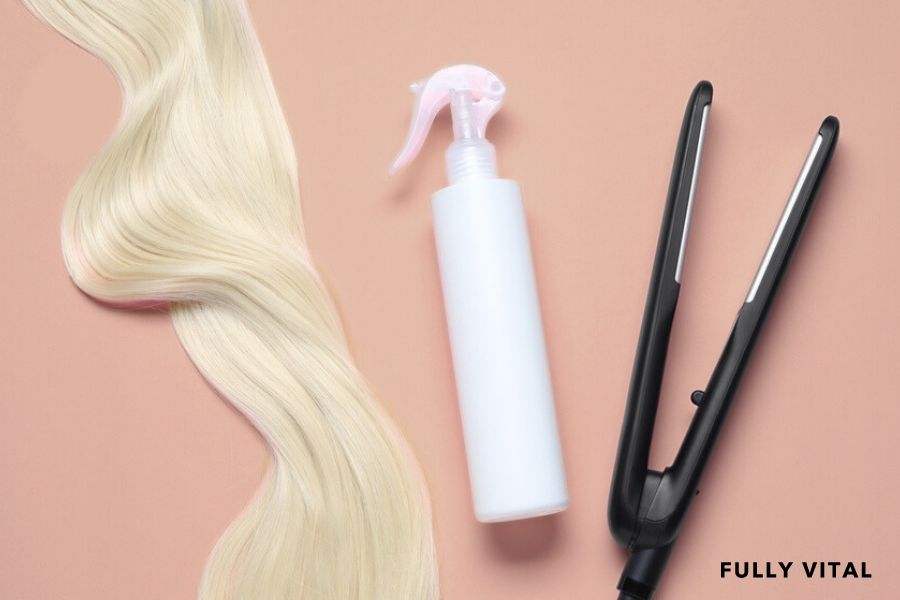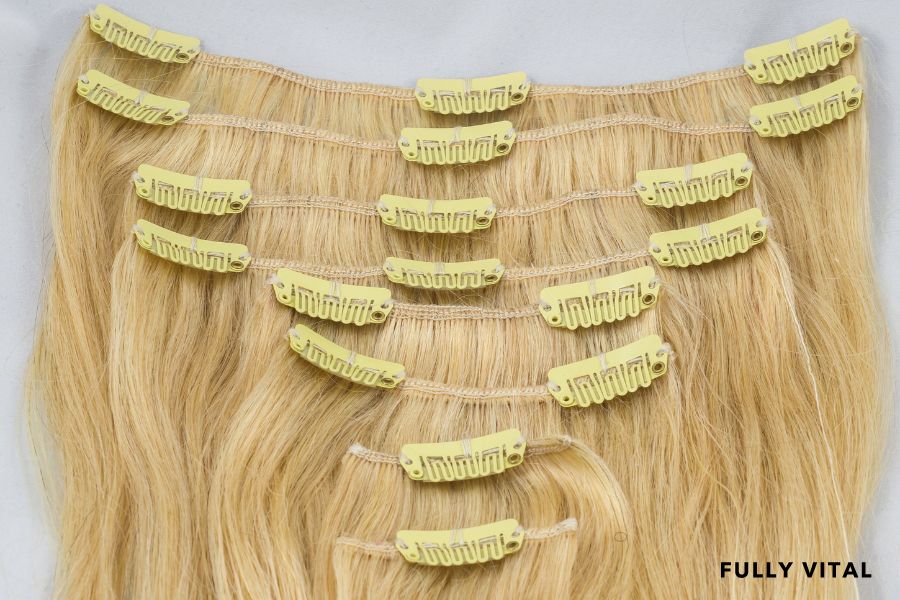
Hair Coloring: A Comprehensive Guide For Beautiful Locks
Tired of dull and lifeless hair that fails to reflect your inner radiance? It's time for a transformation.
Our essential guide to stunning hair color is here to help you unlock the vibrant, head-turning locks you've always dreamed of.
Whether you're longing to cover grays, add depth, or completely reinvent your style, hair coloring is the powerful tool you need.
Fully Vital, a trusted leader in scientifically advanced hair growth products, understands the significance of maintaining the health of your precious tresses.
In this comprehensive guide, we'll equip you with all the knowledge you need to master the art of hair coloring, from choosing the perfect shade to protecting your hair's integrity, all while stimulating hair growth.
Join us on this transformative journey towards breathtaking, magazine-worthy hair!

I LOVE MY HAIR NOW
FullyVital hair serum and hair vitamins made tremendous improvements in my hair. I truly love my hair now.
Dorit S.,
What Is Hair Coloring?
Hair coloring is a popular cosmetic procedure that involves altering the natural color of one's hair.
This process can range from simple gray coverage to dramatic changes like going from brunette to blonde.
Hair dyes are used to achieve the desired color, and these can be temporary, semi-permanent, or permanent, depending on the type of dye and application method.
The practice of hair coloring serves various purposes, from expressing personal style and fashion trends to covering up signs of aging.
With advancements in hair dye technology, options now include nourishing ingredients that help maintain hair health, alongside a vast palette of colors that cater to every individual's unique preferences.
Hair coloring, when done correctly, can enhance one's appearance, boost confidence, and allow for creative self-expression.
How Do I Know What Hair Color Looks Best On Me?
Choosing the right hair color can be a daunting task, especially with so many options available.
But fear not! There are a few key factors to consider when determining which hair color will suit you best:
Skin Tone
Match hair color to your skin's undertone.
Warm undertones suit golden blonde or caramel; cool undertones pair well with platinum blonde or ash brown.
Neutral undertones offer more flexibility.
Eye Color
Choose hair colors that highlight your eye color.
Reds and copper tones enhance green or hazel eyes, while ash or platinum blonde can accentuate blue or gray eyes.
Personality and Style
Select colors that reflect your personality.
Bold shades for the adventurous, and natural tones for a more reserved look.
Lifestyle and Maintenance
Consider your daily routine and willingness for upkeep.
Busy lifestyles or low-maintenance preferences should lean towards colors that require less frequent touch-ups.
Professional Advice
Consult a hairstylist for personalized recommendations.
They can assess your features and preferences, guiding you to suitable colors.

Different Types Of Hair Coloring Techniques
Hair coloring isn't limited to just choosing a shade and applying it to your locks.
There are various techniques that hairstylists use to achieve different effects and textures.
Here are some popular hair coloring techniques you can consider:
Highlights and Lowlights
This technique adds dimension.
Highlights lighten hair strands for a sun-kissed effect, while lowlights add darker shades for depth.
It creates a natural, multi-dimensional look.
Balayage
A popular method where color is hand-painted in a sweeping motion, offering a natural, lived-in look.
It's customizable in terms of contrast and color range, from subtle to bold.1
Ombre
Also called hair glossing or toning, this involves a semi-permanent color or gloss application for added shine and enhanced natural color, refreshing your hair without drastic changes.2
Hair Glazing
Also called hair glossing or toning, this involves a semi-permanent color or gloss application for added shine and enhanced natural color, refreshing your hair without drastic changes.3
Color Melting
This technique blends multiple shades smoothly, creating a seamless gradient effect.
It's applied in a way that the colors melt into each other for a natural, blended appearance.
Understanding The Lifespan Of Colored Hair
Once you've colored your hair, it's important to understand that the color won't last forever.
The lifespan of colored hair depends on several factors, such as the type of color used, the health of your hair, and your hair care routine.
Here are some key points to consider:
- Temporary Hair Color: Lasts a few washes. Ideal for trying new colors without long-term commitment.
- Semi-permanent Hair Color: Lasts up to 8-10 washes. Fades gradually, allowing for shade experimentation or color touch-ups.
- Permanent Hair Color: Lasts until hair grows out, but vibrancy may fade due to sun exposure, heat styling, and hair care practices.
To help maintain the lifespan of your colored hair, consider the following tips:
- Use Color-Protecting Shampoo and Conditioner:Use products designed for colored hair, typically sulfate-free, to seal the cuticle and preserve color.
- Opt for Gentle Hair Care: Minimize washing, use lukewarm water, and gently massage your scalp. Limit heat styling and protect hair from excessive heat.
- Protect Your Hair from the Sun: UV rays can fade hair color. Wear hats or use products with UV filters.
- Get Regular Touch-Ups: For permanent color maintenance, schedule touch-up appointments to keep color vibrant and minimize regrowth.
Dealing With Hair Damage After Coloring
Hair coloring, while a great way to transform your look, can sometimes cause damage to your locks.
If you notice signs of damage after coloring your hair, don't worry, as there are steps you can take to repair and nourish your hair.
Here are some tips for dealing with hair damage after coloring:
- Trimming Split Ends: Regular trims are crucial for removing split ends and preventing further damage. A professional stylist can help maintain healthy hair.
- Avoiding Harsh Chemicals: Choose gentle, sulfate-free shampoos and conditioners suitable for damaged or color-treated hair.
- Protecting Your Hair at Night: Use satin or silk pillowcases or wrap your hair in a silk scarf to reduce breakage during sleep.
- Being Gentle When Brushing: Employ a wide-toothed comb or a detangling brush, starting from the ends to minimize damage.
DIY Hair Coloring: Is It For You?
While going to a professional hairstylist for hair coloring is generally recommended for the best results, some individuals may prefer the convenience and cost-effectiveness of DIY hair coloring at home.
Before you dive into the world of DIY hair coloring, consider the following factors to determine if it's the right choice for you:
Experience and Skill
DIY coloring demands knowledge and skill.
Beginners should start with simple techniques and follow instructions.
Complex changes are better left to professionals.
Risk of Damage
Home coloring poses more risks than salon treatments.
It's vital to use quality products and follow instructions to reduce hair damage risks.
If your hair is fragile or damaged, consider a professional.
Color Correction Challenges
Correcting mistakes or achieving specific colors is harder at home.
Professionals have the expertise to adjust and correct color.
For specific goals or past difficulties, professional help is advisable.
Multiple Colors or Techniques
Techniques like highlights, balayage, or ombre require precision.
A professional is recommended for these intricate processes.
Unlock The Power Of Fully Vital's Hair Growth ProductsExperience healthier, more youthful-looking hair with Fully Vital's innovative range of hair growth products. Our mission is clear: to create powerful, science-backed solutions that combat the aging of your hair. Say goodbye to brittle strands, thinning patches, and lackluster locks – and hello to confidence and revitalization. Key Features:
Benefits:
Don't settle for lackluster hair. Unleash your locks' true potential with Fully Vital's revolutionary hair growth products. Begin your journey to healthier hair today! |
Final Thoughts On Hair Coloring
Hair coloring is a dynamic and transformative process that allows you to express your unique style and personality.
Whether you want to cover up gray hair, add dimension and depth, or experiment with vibrant colors, there is a hair color out there that will help you achieve your desired look.
By choosing the right color for your skin tone, considering different coloring techniques, and maintaining your colored locks with care, you can unlock the stunning potential of your hair.
At Fully Vital, we understand the importance of a healthy and fulfilling relationship with your hair.
That's why we provide science-backed hair growth products to help you slow down and reverse the aging of your hair, empowering you to embrace your natural beauty.
Our mission is to create powerful products that support your hair growth journey.
Whether you opt for a professional stylist or decide to try DIY hair coloring at home, remember that hair coloring is a personal journey.
Don't be afraid to step out of your comfort zone, experiment with different colors and techniques, and have fun in the process.
With the right knowledge and tools, you can achieve the beautiful and vibrant hair you've always dreamed of.
So go ahead, embrace the beauty of hair coloring, and let your locks be a reflection of your unique style and confidence.
Your hair deserves to shine, and with the right care and attention, you can enjoy the endless possibilities of beautiful and captivating hair colors.
Frequently Asked Questions On Hair Coloring
How long does hair color last?
Hair color can last anywhere from 4 to 8 weeks, depending on various factors such as the type of color used, the condition of your hair, and your hair care routine.
Regular shampooing, exposure to sunlight, and heat styling can also affect the longevity of your hair color.
Can hair color damage my hair?
Hair color, especially when done professionally or with high-quality products, is typically safe for your hair.
However, it is important to note that repeated coloring or using harsh chemicals can potentially damage your hair.
To minimize damage, it's essential to follow the instructions provided with the hair color product and to nourish your hair with regular conditioning treatments.
How do I maintain my hair color?
To maintain your hair color, it is important to use color-safe shampoos and conditioners that are specifically formulated for colored hair.
Additionally, avoiding excessive heat styling, limiting exposure to sunlight, and using a wide-toothed comb instead of a brush can help preserve the vibrancy of your hair color.
Are there natural alternatives to hair coloring?
Yes, there are natural alternatives to traditional hair coloring methods.
Some common natural options include henna, herbal dyes, and vegetable-based dyes.
These natural alternatives can provide a temporary or semi-permanent color, depending on the specific product used.
What is a semi-permanent hair color?
Semi-permanent hair color is a type of hair coloring product that adds color to your hair without drastically changing its natural color.
It typically lasts for a shorter period (about 4 to 6 weeks) compared to permanent hair color.
Semi-permanent hair color gradually fades with each wash, allowing for less commitment and flexibility in changing your look.
How is a patch test done for hair color?
A patch test is done by applying a small amount of hair color product to a small patch of skin, typically behind the ear or on the inner wrist.
This is done to check for any potential allergic reactions or sensitivity to the hair color product.
It is important to follow the instructions provided with the hair color product to perform an accurate patch test before applying the product to your hair.
What is a touch-up in hair coloring?
A touch-up in hair coloring refers to the process of applying hair color to the outgrown roots or faded areas of previously colored hair.
Touch-ups help maintain a consistent and even hair color throughout the lengths of your hair.
They are typically done every 4 to 6 weeks, depending on how fast your hair grows.
Can I color my hair during pregnancy?
While most hair coloring products are considered safe for use during pregnancy, it is recommended to consult with your healthcare provider before using any hair color products.
Some experts suggest waiting until after the first trimester to minimize any potential risks.
How do I choose the right brand for hair coloring?
Choosing the right brand for hair coloring depends on several factors such as your desired hair color, hair type, and any specific concerns or preferences you may have.
It is important to do your research, read reviews, and consider consulting with a professional hairstylist who can guide you in selecting a brand that suits your needs and preferences.
How often should I color my hair?
The frequency of hair coloring depends on personal preference and the rate at which your hair grows.
On average, most people color their hair every 4 to 8 weeks to maintain their desired color and cover any outgrown roots.
However, it is important to give your hair time to rest between coloring sessions to minimize damage.
Consulting with a professional hairstylist can help determine the best color maintenance schedule for your hair.
Sources:
- The Ultimate Guide to Balayage: Techniques, Trends and Tips. (n.d.). Revlon Professional. Retrieved November 18, 2023, from https://www.revlonprofessional.com/balayage/#
- What the Heck Is a Hair Gloss Treatment, and Should You Use One? (2021, August 8). Healthline. https://www.healthline.com/health/beauty-skincare/hair-gloss-treatment
- What Is Hair Gloss? - L’Oréal Paris. (n.d.). L’Oréal Paris. Retrieved November 18, 2023, from https://www.lorealparisusa.com/beauty-magazine/hair-color/hair-color-ideas/what-is-hair-gloss







